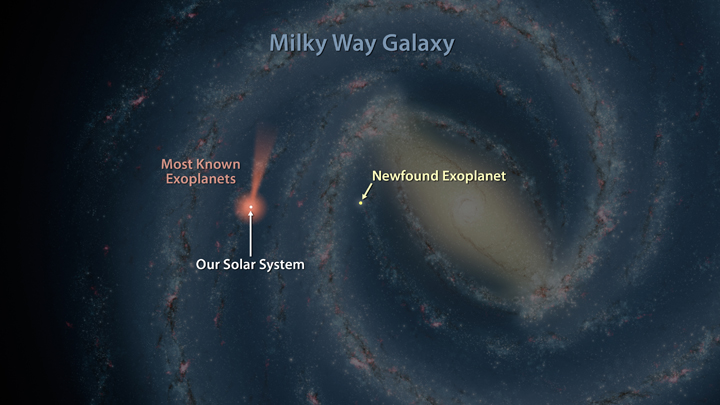TORONTO – Astronomers have spotted one of the most distant exoplanets ever seen — about 13,000 light-years away.

While there have been roughly 1,800 confirmed exoplanets to date (with thousands more to be confirmed), the method astronomers used to find this particular one is much different than what is conventionally used. And it’s all about collaboration.
The Poland-based Optical Gravitational Lensing Experiment (OGLE) partnered with the Spitzer Space Telescope to solve the mystery as to where planets can be found.
READ MORE: Astronomers find ancient star system with 5 Earth-size planets
OGLE’s Warsaw Telescope at the Las Campanas Observatory in Chile looks for exoplanets — planets orbiting other stars — using a process called microlensing. This is when a star passes in front of another star. The gravity of the first star acts as a lens, magnifying and temporarily brightening the far-off star’s light. If there’s a planet orbiting the first star, there will be a brief blip in magnification.
What’s also unique is that this planet is found near the central bulge in our galaxy. Most exoplanets we’ve found so far are in our galaxy’s spiral arms.
“We don’t know if planets are more common in our galaxy’s central bulge or the disk of the galaxy, which is why these observations are so important,” said Jennifer Yee of the Harvard-Smithsonian Center for Astrophysics (CfA).
Now comes the collaboration part.
NASA’s Spitzer Space Telescope sees not visual light, but infrared. It sits about 207 million kilometres from Earth (farther than our Sun is from us). Because it sits far off from Earth, when it views the same microlensing event, it will see it at a different time due to something called parallax. In this case, Spitzer saw the microlensing event 20 days earlier. And the duration of the event was long: 150 days.
So, now astronomers had two observations with which they could calculate the distance to the star and the planet. Not only that, they could calculate the planet’s mass, which is about half that of Jupiter.
So far, astronomers have found 30 planets using this microlensing method. They hope to find an additional 120 using Spitzer this summer.



Comments